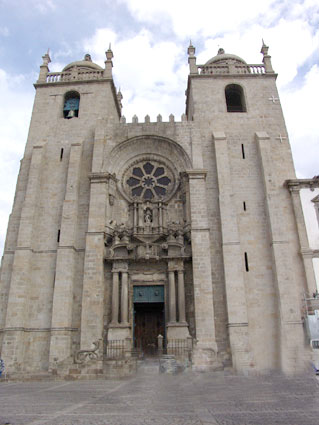
Below - One of the butresses of the left tower has an interesting relief showing a ship, an early sign of the importance of sea routes in the economy of Oporto in the 12-13th centuries.

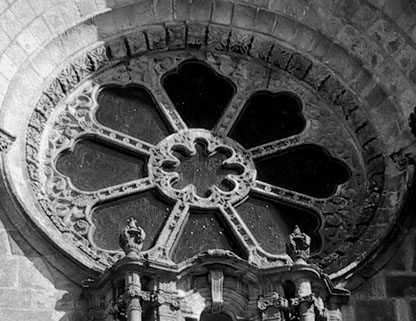
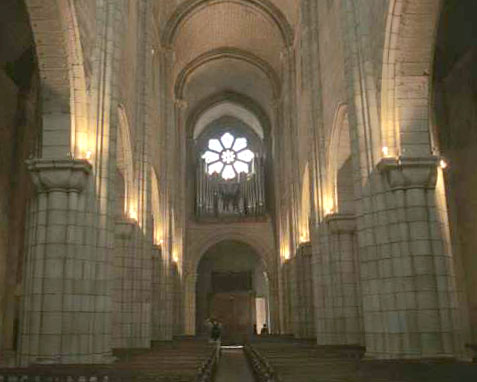
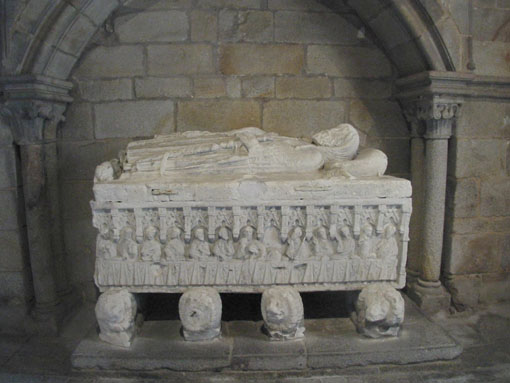
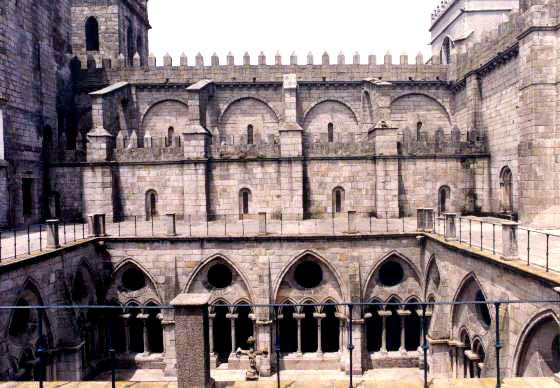
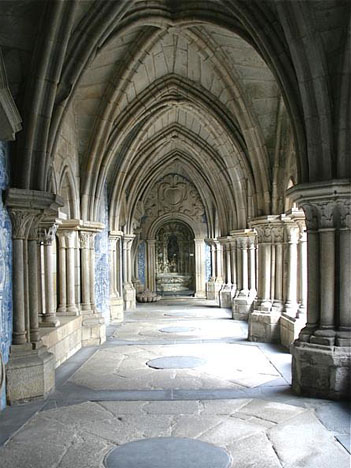
Gothic
Index
| S� do Porto | ||||||||||||||||||||||||||||||||
| Oporto, the city at the banks of the river Douro, was taken back from the Moors in the year 868. The present Cathedral of Oporto (S� do Porto) began being built around 1110 under bishop Hugo, before the birth of Portugal as kingdom. Construction was initially slow but accelerated towards the end of the 12th century, and the Romanesque cathedral was mostly finished in the first decades of the 13th century. It has suffered continuous renovations that changed much of its initial character, but important original parts have survived. In this cathedral important events have taken place, like the marriage in 1387 of King John I with Philipa of Lancaster (Felipa de Lencastre), daughter of duke John of Gaunt, and the baptism of their son, Prince Henry the Navigator (Henrique o Navegador), in 1394. | ||||||||||||||||||||||||||||||||
 |
||||||||||||||||||||||||||||||||
| Left - Main fa�ade of Oporto Cathedral. The Romanesque fa�ade was somewhat similar to that of Lisbon Cathedral, with a rose-window over the main portal, defensive crenelations and two flanking towers. In the 17th century the Romanesque portal was substituted by a baroque one, and the upper part of the towers was also modified. Below - One of the butresses of the left tower has an interesting relief showing a ship, an early sign of the importance of sea routes in the economy of Oporto in the 12-13th centuries. |
||||||||||||||||||||||||||||||||
 |
||||||||||||||||||||||||||||||||
 |
||||||||||||||||||||||||||||||||
| Right - The rose-window of Oporto Cathedral, with its three-lobed subdivisions, indicates the beginings of the Gothic style. The delicate decoration is made of floral and vegetal motifs. | ||||||||||||||||||||||||||||||||
 |
||||||||||||||||||||||||||||||||
| Up - Oporto Cathedral has three aisles covered by barrel vaulting with pointed arches. The weight of the stone roof of the central aisle is partially supported by a series of flying butresses outside, a feature not found in the cathedrals of Coimbra and Lisbon, which were finished earlier. Also in contrast to those churches, Oporto cathedral does not have a triforium (an arched gallery over the central aisle). The interior is very dark, due to the narrow windows. The transept has a lantern tower over the crossing, renovated in the 16th century. Originally the choir had a central chapel surrounded by a gallery (deambulatory), but it was substituted in the 17th century by a Baroque chapel. | ||||||||||||||||||||||||||||||||
 |
||||||||||||||||||||||||||||||||
| Up - The Gothic chapel of St John, annexed to the cathedral, houses the tomb of Joao Gordo, who died in 1333. He was a knight of the Order of the Hospitallers and an aide to King Dinis I. His sarcophag is held by four lions and has representations of the Last Supper, Crucifixion and the Coronation of Our Lady. | ||||||||||||||||||||||||||||||||
 |
||||||||||||||||||||||||||||||||
| Up - View of the cloisters and lateral nave of Oporto Cathedral. Flying butresses along the central aisle help support the weight of the barrel vaults. The Romanesque windows of the side and central aisles are very narrow, allowing little light to get through. The flying butresses are a typical Gothic feature, and appear in Portugal for the first time in this building (first decades of the 13th century). The cloisters, in Gothic style, we added much later, in the last decades of the 14th century. | ||||||||||||||||||||||||||||||||
 |
||||||||||||||||||||||||||||||||
| Right - The beautiful Gothic cloisters of Oporto Cathedral were the last to be built of a series that began with the Romanesque-Gothic cloister of Coimbra Cathedral. All capitals of the columns have a vegetal motif. Nowadays the cloister is decorated with Baroque tiles and chapels. | ||||||||||||||||||||||||||||||||
| Romanesque Gothic Index |
||||||||||||||||||||||||||||||||